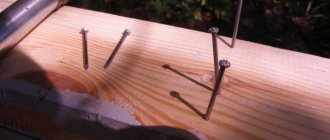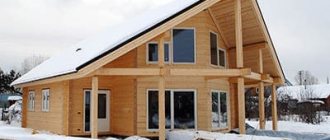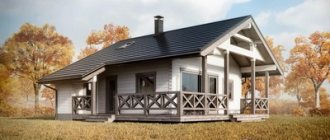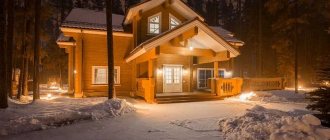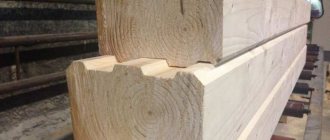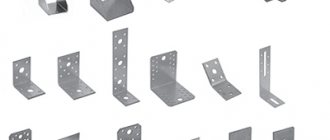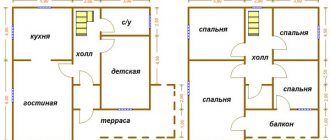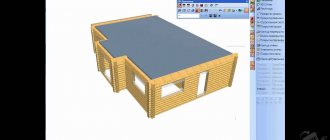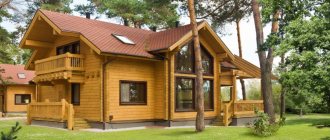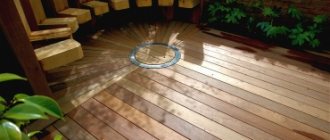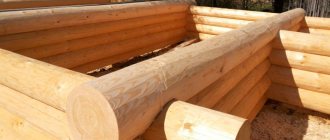The selection of fasteners for a frame house is carried out at the design and costing stage.
The assembly of a typical one-story building with a standard layout requires an average of 150-160 kg of nails.
But given the variety of fasteners, it is important to understand which products to use.
What length and structure should the nails be? Is it possible to use self-tapping screws in frame construction to secure parts of the foundation?
Let's talk about the choice of fasteners in more detail.
What fasteners are used in a frame house?
Fastening in a frame house is a fairly simple topic, but it is important to think through everything in advance so as not to run to the stores and buy one kilogram of nails at a time, but to immediately purchase 150 kilograms (usually this is how much is spent on an average house) of the necessary fasteners on the base at a big discount.
I did so, but it still wasn’t enough; I’ve already gone back several times to buy new boxes of nails. But of course, there were a lot of extra nails and screws left. Therefore, I want to make the task as easy as possible for my readers.
I would like to note right away that it is forbidden to use screws or self-tapping screws , since the load everywhere is shear, not tensile, and neither self-tapping screws nor self-tapping screws work for shearing, so there is nothing to discuss here. Some builders are still confident that self-tapping screws can be used and will try to persuade you to do so. Don't give in. But nails work ; they are incredibly difficult to cut. We are, of course, talking about the load-bearing part of the house, and not about the decoration.
And I also want to say about the corners . Angles are not used by professionals in frame construction (not counting the temporary attachment of trusses to the frame). You can use them , but it’s not profitable in terms of time and money, decide for yourself. Again, be wary of builders who recommend their use.
Types of nails, their purpose
In modern house construction using the frame method, several types of nails are used, which are high-tech hardware. In this case, the size of the nails plays an important role in connecting different building materials. Most often, the following fastening options are used for the construction of a frame house.
Standard galvanized and screw nails
Screw fasteners are also called ring fasteners or ribbed fasteners. When connecting the external structural elements of any wooden building, traditional galvanized nails must be used.
To connect frame parts, screw fastenings with special notches made in different shapes are often used. Such connections significantly increase the rigidity of the frame structure by increasing friction in the nodes.
Black nails
Such fasteners are also standard and screw, but they are not galvanized. They are used to connect individual internal parts of a house structure. Using non-galvanized nails is just one option to save money on construction. In practice, professional installers use only galvanized fasteners.
Nails for nailers
This type of fastening is a specially shaped hardware that is not driven into the building material by force, but is immersed in the wood with a special tool.
Tar paper nails
These fasteners are also available in an economical black version and galvanized. They are used for fixing various roll materials intended for waterproofing and covering building walls with various slabs.
The list of options for nails used for the construction of frame structures is not limited to the above-mentioned connecting elements. At the same time, modern manufacturers are constantly improving existing forms of hardware.
Foundation fasteners
For a pile foundation, the following fasteners are used: if you have a screw foundation, then you need steel anchor bolts . if you have a bored foundation, then you need M10 studs and washers with M10 nuts (if you do as I do, pouring the studs in the pour) or concrete anchor bolts if you have a slab or strip foundation, then you will again need concrete anchor bolts
Beam supports and holders
Holders and supports for timber are used in the construction of all types of floors and rafter systems. Specialized supports for beams have a monolithic design, are designed for a specific section of beam and provide an open or closed arrangement of mounting sites for fasteners. The universal modification of the support consists of two elements (right and left) and allows you to secure a beam of any diameter.
If it is necessary to connect a beam that is located on another load-bearing element or wall, use universal Z-shaped or S-shaped (right, left) holders. One perforated plane of the holder is attached to the beam, the other to the load-bearing support.
Fasteners for cladding frame houses
Fasteners for floor covering. 60 mm nails - preferably rough or screw nails + glue (or self-tapping screws of the same length). Such nails help to hold the floor tightly so that it does not creak and is not “alive.”
Fasteners for exterior wall cladding. 50 mm nails - rough or screw are better. This applies to both OSB-3 boards and plywood, as well as inch wood (which I will use for cladding a frame house).
Fasteners for interior wall cladding. If the interior is sheathed with plasterboard, then you will need special self-tapping screws for plasterboard with a length of 25 mm (less often 35 mm) in length. Just remember to tighten the screws correctly:
If you have lining inside, then it can be secured with 50-70 mm nails.
Mounting plates
Fastening plates are rectangular perforated steel hardware 2-3 mm thick and are used for:
- butt joints of two parts in the same plane;
- building up boards or timber;
- formation of ridge connection nodes;
- fastening elements of the rafter system, etc.
Mounting plates are convenient to use because they can be positioned along, across or obliquely to the connection line without reducing the strength of the fastener. Many perforations on the surface of the hardware allow you to hammer in the required number of nails at the most reliable fastening points.
Plates are available with perforations of the same or different diameters, including those for the installation of tie bolts. Fastener manufacturers offer mounting plates both in the form of individual elements of various sizes, and in the form of tape-rolls 5-10 meters long. The roll format is convenient and versatile, as it allows you to quickly measure and cut the mounting plate to the optimal length. A special feature are the T-shaped mounting plates for creating a three-piece nodal connection.
Deck fasteners
For terraces, it is better to use self-tapping screws made of stainless or galvanized steel. There is a special fastener for terraces, but for the price it comes out as half a terrace.
It is also recommended to fasten the deck boards with hidden “snake” fasteners.
In this video you can look at almost every fastener in visual detail:
So, fasteners are a very important element of a frame house, which you should pay close attention to if you don’t want it to fall apart or simply burst at the seams over time. Do not give in to the persuasion of builders who want to build you a house using screws, self-tapping screws and other inappropriate things. Read reviews from real residents of frame houses on the forum or in my article https://karkasgid.ru/otzyvy-realnyx-zhilcov-o-karkasnyx-domax-k-2017/ and gain experience so that no one deceives you.
Benefits of nails
The use of nails for frame houses has its advantages over self-tapping screws, for example:
- The wood exerts pressure on the nail from all sides, which ensures a stable position of the fastener;
- Galvanized nails perfectly withstand temperature and humidity deformations of wood, which destroy the threads of self-tapping screws, as a result of which the element loses its stability in the wooden building material;
- Nails also perfectly hold significant lateral loads when fastening hinged elements of frame structures. Self-tapping screws made of hardened metal break easily in such places.
Therefore, in frame house construction, nails of various shapes are mainly used. Self-tapping screws are used only for making sheathing, fastening insulating materials or covering a building with siding or chipboard.
Connection nodes
The purpose of the strapping is to strengthen the frame, connect the roof and foundation, and also add strength to the structure. The lower and upper units perform different tasks, but their assembly principle is the same
Auxiliary elements that need to be given equal attention are the corners of the wall and the building system
Bottom harness
Bottom frame of the house - grillage
The system is designed to strengthen the building in the lower part. The strapping evenly distributes the load around the perimeter. It is the same integral part of the base as the grillage. In this case, the foundation manufacturing technology does not matter - fasteners are used in all cases.
Nuances of the upper harness
Mounted on vertical supports after fixing the corner posts. When the length of the building is more than 6 m, intermediate pillars are installed in the center of the wall. After this work, the top trim is laid and the jib is fixed. Then follows the installation of the remaining vertical posts. Upon completion, the temporary supports are removed.
Wall angle and construction system
Upper frame frame house
The corner connections of a frame house are places of maximum heat loss. It is in these areas that condensation accumulates. Insulating the corners is a priority goal, so when assembling the frame it is necessary to carry out the appropriate work.
Directly forming the corner of the wall is carried out according to the following scheme:
- Place the fixing strips on the outside of the vertical beam;
- place the corners on the side;
- secure the connections.
In addition to corners, there are types of fastenings in the building system:
- In the upper trim it is necessary to connect the ceilings, floors, and posts on the gables.
- Fastening the internal racks to the rafter beam and to the ridge.
- Tying the struts (rafter supports).
- Fasteners for crossbars to inclined rafters.
- Knots for battens.
The elements are fastened with corners or nails if the parts of the system overlap each other.
AF-0034 - frame gun
Construction gun (nailer) for driving nails up to 100 mm long. Uses a standard type of consumable - slatted nails on paper with a D-shaped head. A wide range of fasteners - smooth, rough, galvanized. The gun is balanced for one-handed operation. It has spikes in the nose for easy work with rafters when you have to shoot at an angle.
The main application is frame work, assembly of panel panels, temporary fencing. The use of a sequential mechanism provides complete control over nail penetration, the tool is equipped with a mechanism against repeated firing, and the spikes in the nose will not allow the gun to slip off the surface even in wet weather.
Summarizing all of the above, the use of a slatted nailer for performing frame work is the most effective method in terms of the time spent on performing the work. Assembling frame houses is a relatively new method for our country and new modern equipment is being produced to solve these problems, so progress does not stand still, we keep up with the times.
